Region 2381 rapidly grows, produces M1.0 and M1.8 solar flares
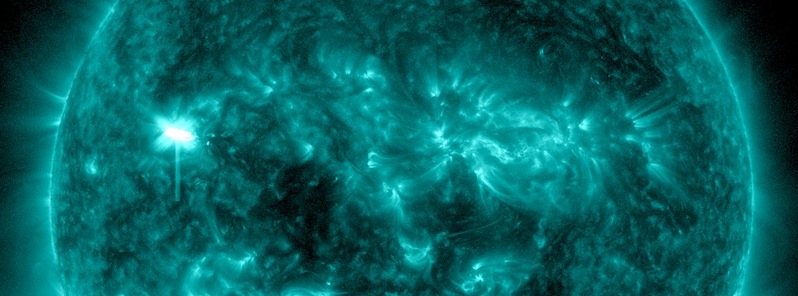
Beta-gamma classified Region 2381 exhibited rapid growth over the past 24 hours (by 12:30 UtC today) and produced a moderately strong M1.0 solar flare at 08:44 UTC on July 6, 2015. The event started at 08:24 and ended at 08:59 UTC.
There were no radio signatures that would suggest a Coronal Mass Ejection (CME) was produced.
This region is rapidly growing and rotating into geoeffective position. It could produce Earth-directed CMEs in the days ahead.
Solar activity is expected to be low with a chance for M-class (R1-R2/Minor-Moderate) flare activity over the next three days (July 6 to 8), particularly from Region 2381.
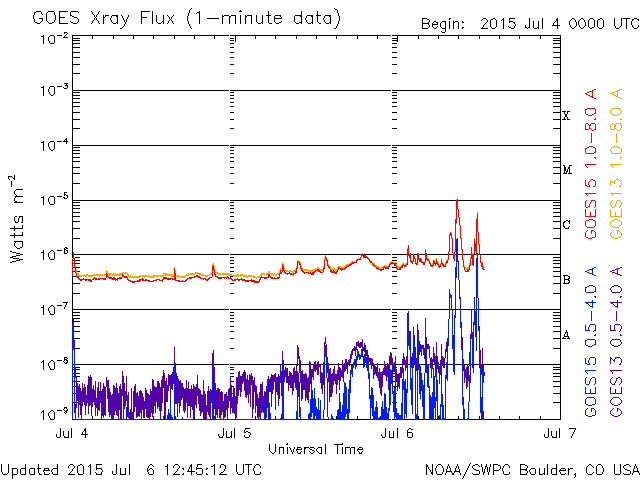
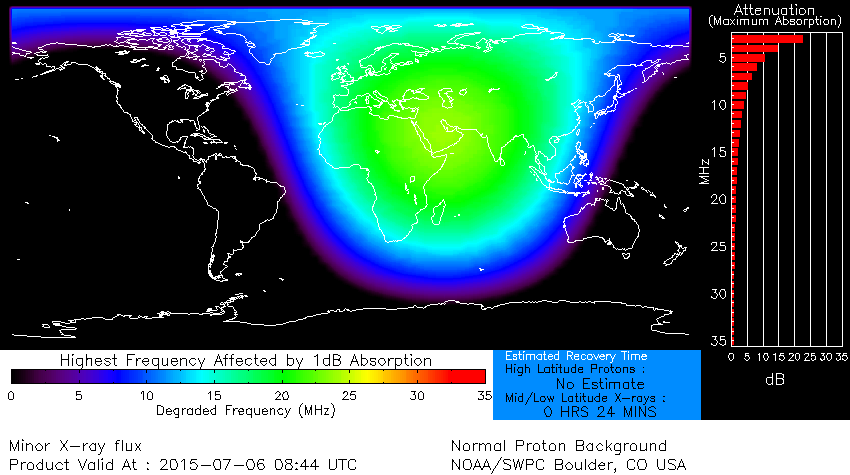
Update:
Region 2381 produced M1.7 solar flare at 20:40 UTC on July 6, 2015. The event started at 20:32 and ended at 20:50 UTC.
There were no radio signatures that would suggest a CME was produced.
The region also produced several C-class flares and continued to grow in size and spot count.
Sunspots
There are currently 8 numbered sunspot regions on the Earth side of the Sun.
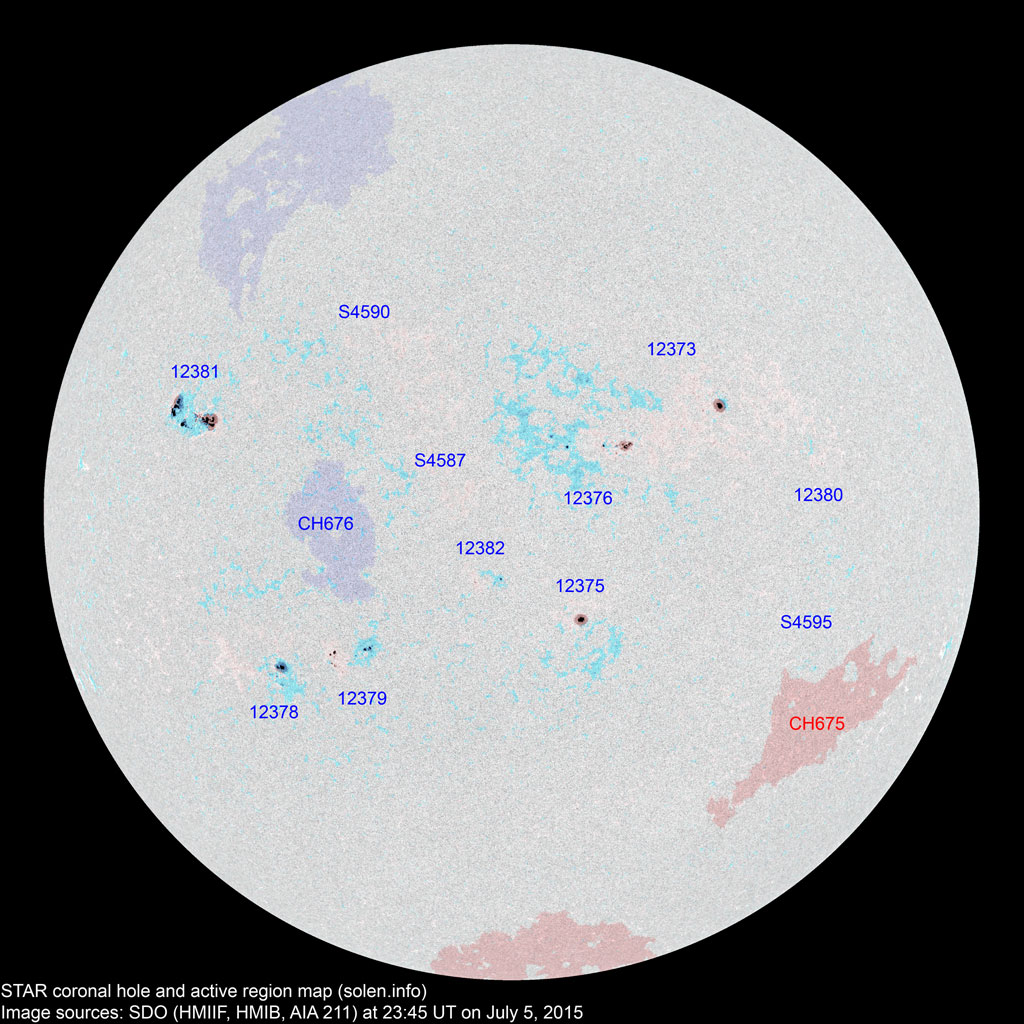
Sunspots on July 5, 2015.
2373 – Beta
2375 – Alpha
2376 – Beta
2378 – Beta
2379 – Beta
2380 – Alpha
2381 – Beta-Gamma
2382 – Beta
Energetic particles
The greater than 2 MeV electron flux was at normal to moderate levels while the greater than 10 MeV proton flux remained at background levels over the past 24 hours (by 12:30 UTC on July 6).
The greater than 2 MeV electron flux is expected to be at normal to moderate levels for the remainder of July 6 and at moderate to high levels on July 7 and 8. The greater than 10 MeV proton flux is expected to remain at background levels throughout July 6 to 8.
Solar wind
Solar wind parameters were indicative of weakening coronal hole high speed stream (CH HSS) effects during the past 24 hours. Solar wind speeds averaged about 525 km/s. IMF total field values ranged between 2-7 nT while the Bz component varied between +6 nT to -5 nT. The phi angle was predominately in a negative (toward the Sun) solar sector orientation.
Solar wind parameters are expected to begin a return to background levels through July 6 as CH HSS influence continues to subside. A return to an ambient solar wind environment is expected on July 7 and 8.
(1).gif)
Geomagnetic field
Geomagnetic field conditions were at quiet to active levels, reflecting waning CH HSS influence and is expected to be at quiet to unsettled levels for the rest of July 6 as CH HSS effects weaken. Quiet geomagnetic field activity is expected on July 7 and 8 as CH HSS influence subsides.
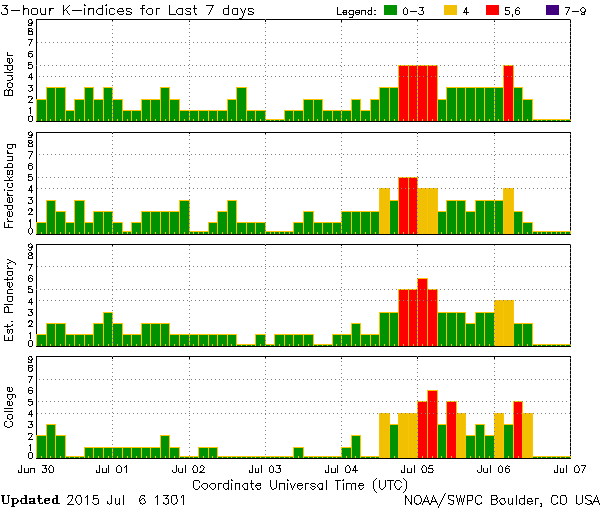
Featured image: NASA SDO/AIA 131 at 08:48 UTC on July 6, 2015.

Commenting rules and guidelines
We value the thoughts and opinions of our readers and welcome healthy discussions on our website. In order to maintain a respectful and positive community, we ask that all commenters follow these rules:
We reserve the right to remove any comments that violate these rules. By commenting on our website, you agree to abide by these guidelines. Thank you for helping to create a positive and welcoming environment for all.